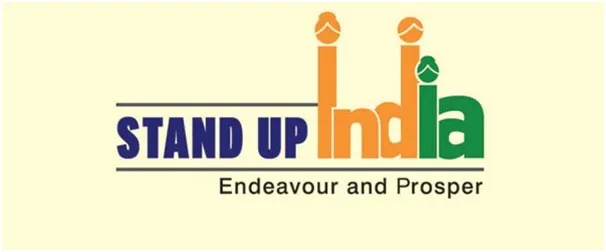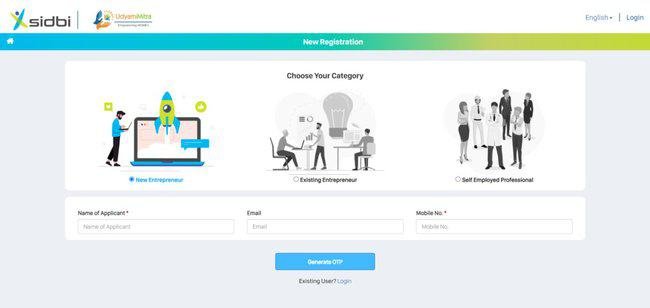The Government of India’s flagship programme, Startup India, aims to create a robust ecosystem for fostering startups and innovation in the nation, which will foster long-term economic growth and create significant employment possibilities. The Stand Up India Scheme intends to offer persons from the country’s scheduled castes, scheduled tribes, or women loans ranging from Rs. 10 lakhs to Rs. 1 crore. To encourage entrepreneurship among them is the goal. The IAS Exam’s Indian Polity Syllabus includes the topic “Stand Up India Scheme,” and this page will give you all the pertinent information. According to the plan, each of the 1.25 lakh bank branches would have to lend money each year to at least one woman and one Dalit or tribal entrepreneur in their service region.

About Stand Up India Scheme
The programme is a component of the Ministry of Finance’s (MF) Department of Financial Services (DFS) strategy to support entrepreneurial endeavors. This company could operate in the manufacturing, service, or trading industries. In the event of non-individual businesses, an SC/ST or woman entrepreneur must possess at least 51% of the shares and the controlling interest. The total loan amount, which includes a term loan or a working capital loan, is 85% of the project cost. If the borrower’s contribution plus concurrent support from any other plan exceeds 15% of the project cost, the Standup Mitra applicant is not eligible under Stand Up India Scheme. A corpus of Rs. 5000 crores would be created under this scheme through NCGTC for the purpose of a credit guarantee. Assisting the borrowers by offering all-encompassing assistance for pre-loan training, such as loan facilitation, factoring, marketing, etc.
Also Read: Startup India Seed Fund Scheme
Key Highlights of Stand Up India Scheme
| Launched By | Government of India |
| Name of Scheme | Stand Up India Scheme |
| Objective | To offer loans and financing to small enterprises |
| Benefits | Loan for Entrepreneurship |
| Eligibility Criteria | Must be a resident of India |
| Beneficiaries | Dalit, SC, ST, Widow Women |
| Official Website | https://www.standupmitra.in/Login/Register |
The objective of Stand Up India Scheme
- Only established cities currently benefit from the emergence of new industries. However, once this programme is implemented, 2.5 lakh people and 1.25 locations around the nation would each year be the catalyst for new industrial activity.
- In the name of the poor, banks were nationalized, yet for the first 70 years following Independence, approximately 40% of the people lacked access to banking services.
- The goal is to offer loans and financing to small enterprises as well as to the general public.
Benefits of the Stand Up India Scheme
The primary goal of any government initiative is to help the people, and this is also true of the Stand Up India programme. The advantages of starting the Stand-Up India programme are as follows:-
- The initiative’s primary goal is to support, encourage, and motivate new business owners to reduce unemployment.
- If you are an investor, Stand Up India provides you with the ideal setting where you may obtain qualified counsel, free time, and legal knowledge. They would help you with the start-up during the first two years of your job, which is another advantage.
- The consultants receive assistance after a setup from them as well.
- Another advantage for business owners is that they don’t have to worry as much about how to repay the money they borrowed because they have seven years to repay the loan, which eases the burden of repayment on the borrower. However, the borrower may choose to pay back a specific sum each year.
- This plan will assist in removing institutional, operational, and other barriers facing entrepreneurs.
- It might be a huge help in terms of job growth, resulting in the socio-economic empowerment of Dalits, tribal people, and women.
- It might also serve as the catalyst for other government initiatives like “Make in India” and “Skill India.”
- It will support preserving India’s demographic dividend.
- Financial and social inclusion of these social strata will result from having access to bank accounts and technology education.
Features of Stand Up India Scheme
The Stand Up India Scheme was introduced by Indian Prime Minister Mr. Narendra Modi in April 2016 to inspire women and members of the scheduled caste and tribes to become business owners nationwide.
The main components of the Stand Up India programme are listed below:
- The programme is a component of the Ministry of Finance’s (MF) Department of Financial Services (DFS) strategy to support entrepreneurial endeavors.
- To start a new business, a loan of between Rs. 10 lahks and Rs. 1 crore, inclusive of working capital, will be made.
- According to the plan, each bank branch should support two entrepreneurial enterprises on average. One for women entrepreneurs and one for SC/ST individuals.
- To withdraw credit, a RuPay debit card will be offered.
- The bank will keep track of the borrower’s credit history to ensure that the funds are not utilized for any unauthorized purposes.
- Small Industries Development Bank of India (SIDBI) refinancing window with a starting capital of Rs. 10,000 crores.
- A corpus of Rs. 5000 crores would be created under this scheme through NCGTC for a credit guarantee.
- assisting the borrowers by offering all-encompassing assistance for pre-loan training, such as loan facilitation, factoring, marketing, etc.
- To help people with online registration and support services, a web portal has establish.
- This program’s major goal is to strengthen the institutional credit structure by reaching out to underrepresented groups in society and starting bank loans in the non-farm sector.
- The program will also benefit other Departments’ ongoing programmes.
Other Benefits
- The Dalit Indian Chamber of Commerce and Industry will participate in the Stand Up India initiative under the direction of the Small Industries Development Bank of India (SIDBI) (DICCI). There will be participation from additional sector-specific institutions in addition to DICCI.
- The National Bank of Agriculture and Rural Development (SIDBI) and the Stand Up Connect Centers (SUCC) will give the status (NABARD)
- The Small Industries Development Bank of India (SIDBI) would receive an initial allocation of Rs. 10,000 crores to give financial support.
- In both the pre-loan and operational phases of this scheme, people will receive assistance from the system and Officials.
- The margin money for the composite loan will be up to 25% to help the credit system reach out to entrepreneurs.
- The applicants for this programme will become familiar with the websites and other tools for e-marketing, web entrepreneurship, factoring services, and registration.
Challenges with the Stand Up India Program
Every system or programme that is implemented has a set of benefits and drawbacks. The Stand Up India Program is identical. The Stand Up India programme is facing some difficulties, which are listed below:
- The public’s education regarding the socioeconomic aspects of Dalit and female entrepreneurship has not received much attention. The Stand Up India initiative may not be very successful if this is not done.
- The company must be innovative, according to the requirements for this programme. It is up to the DIPP to decide whether or not a product qualifies as innovative. Delays could result, and potential profitable entrepreneurial endeavors could be lost in the process.
- The business must generate $25 crores in revenue. There are very few SC/ST-led businesses and women-led businesses that meet these criteria.
- The self-help groups that have in fact given female entrepreneurs a boost, particularly in rural regions, have fallen victim to elite capture and have been supplanted by regionally dominant interests. There are no institutional initiatives mentioned in the Stand Up India programme to address these issues.
- Additionally, the banking industry has not yet made significant inroads into the hinterlands. Therefore, despite the success of Pradhan Mantri, the difficulties of a lack of institutional bank linkages, a lack of public awareness, the digital divide, and many other technical difficulties may be barriers to bank account linkages. January Yojana (PMJDY)
- The manufacturing sector’s financial support, which ranges from 10 lakhs to 1 crore, is insufficient.
- Women and members of SC/ST communities have not been fully and truly empowered in terms of IT skills, access to skilled labour, industry expertise, etc.
Eligibility Criteria
The eligibility criteria for the india scheme is below:
- The applicant must be at least 18 years old.
- The business must be a partnership, private limited company, or LLP.
- The company’s annual revenue cannot exceed 25 crores.
- For someone from a scheduled caste or scheduled tribe, the entrepreneur should be a woman.
- The loan will only be given to finance “greenfield” initiatives, which must be brand-new endeavors in the manufacturing or service sectors.
- The applicant cannot be in default with a bank or another organization.
- The business should deal with any innovative or commercial consumer items. For the same, a DIPP approval is also necessary.
Documents Required
- Properly completed application form and passport-size photos
- Identification documents like a passport, license, voter ID card, PAN card, etc.
- Voter ID card, passport, most recent phone and electricity bills, property tax receipt, etc. are all acceptable forms of residency proof.
- Proof of a business address
- The partners’ partnership agreement
- Copies of rent agreements or lease papers, as well as the association’s most recent three-year financial sheets
- Statement of the promoters’ and guarantors’ assets and liabilities
- Any other paperwork that the bank may require.
Also Read: MAARG Portal Registration
How to Register for the Stand Up India Program
- Applicants first need to visit the Stand Up India Website of Stand-up India.

- Complete the registration form by first entering the business address, along with the state, district, village, town, and city, as well as the pin code.
- Determine whether the promoter is a woman or a member of the SC/ST category and owns a share of at least 51%.
- The following applicant can choose the type of planned business, the required loan amount, the nature and description of company activity, the availability of business space, and the drop-down menu for first-time business owners.
- He or she must also briefly describe their prior business experience, including the type of business, years of experience, and business activity.
- The next step is to select the desired handholding support based on interest and necessity.
- The applicant’s personal information, including name, business name, user name, mobile number, email, and kind of constitution, is the last and most important step of registration.
- By selecting “Register,” candidates can apply for the Stand-up India scheme with the relevant financial institution; authorities will get in touch with them to complete the necessary paperwork.
Contact Details
- Toll-Free Number: 1800 115 565